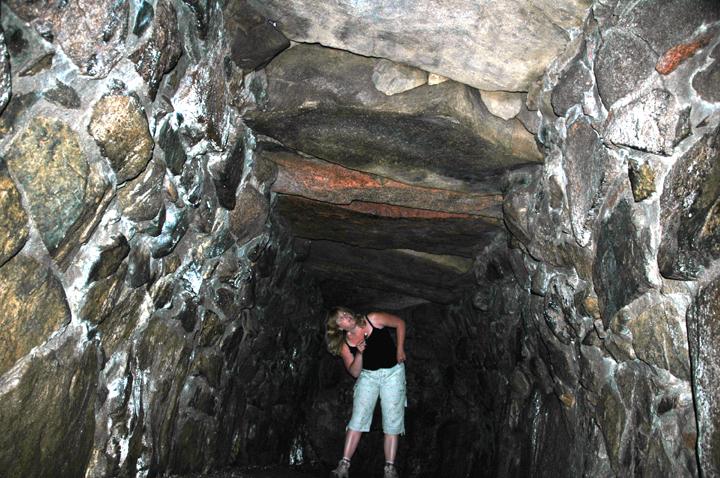Note that the site is actually to the right (south) of the B8060 – I think the OS ref must be slightly ‘out’. I’d say more like NB286189 by my guess.
Access Not good for people with limited mobility. The hill is reasonably short, but fairly steep. Probably boggy & maybe slippery in the wet/damp.
Approaching on the B8060 from Sildinis, park at the second loop of old road on the right (south) of the present road. (The first one seems just to be marked as a path on the Landranger, but on the ground – & the Explorer, I think – it looks more like a bit of old road.
Probably best to park by & use the second gate on the right of the disused road. You should be able to see the 2 stones protruding from the mound on the nearest hilltop. Just go for it!
14 July 2006 Talking to Margaret Curtis in the morning, she suggested we see what we think of this site, while we were in the area visiting Fangs circle. As it happened, I had the TMA page printed out, but didn’t register that it was the same place until I checked later!
Juamei & I immediately agreed that it looked genuinely ancient but neither part seemed really like a ‘pure’ stone circle, which I believe it is being reported as. (This was also what it was noted as on this website at the time.)
The circular setting is very small, with fairly small stones, and pretty wholly uncharacteristic of the stone circles in the area. In many ways, it seemed to us more like the kerb of a cairn, though the stones are far from contiguous – in fact fairly widely spaced for the size of the circle. There are also some stones within the circle that could possibly be the remnants of a cist. (Not that that rules out ‘stone circle’ in those parts!)
The other ‘monument’ is another interesting one. At first glance, it immediately screamed “cairn!” at me. But on closer inspection, some of the stone further down the mound that appears to be kerb material, is in fact bedrock. And the 2 stones protruding from the ‘mound’ seem kind of out of place if the mound represents a fair proportion of the remains of a cairn.
So perhaps these are meant to protrude and there should be more – like the neighbouring circular setting. It was interesting to note that they seemed, at least superficially to point towards Sleeping Beauty’s feet, where Fangs circle lies....
Discussing the site afterwards with Margaret, we got the impression that she is dubious over whether either of the settings is a stone circle, but she did NOT seem to doubt that they are ancient. At mentions of kerb circles and cairns there was much nodding, as if this is her suspicion.














































